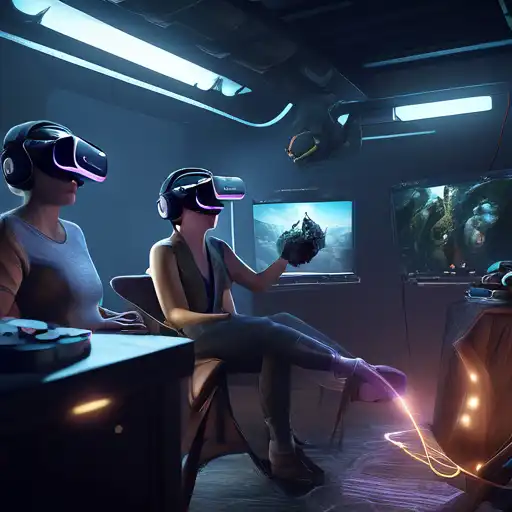Introduction to Virtual Reality
Virtual Reality (VR) has transformed the way we interact with digital content, offering unparalleled immersive experiences. From gaming to education, VR is reshaping industries by providing users with a sense of presence in a virtual world. This guide will walk you through the essential steps to create captivating VR experiences that engage and amaze your audience.
Understanding VR Technology
Before diving into VR development, it's crucial to understand the technology behind it. VR relies on headsets that track the user's movements and adjust the virtual environment accordingly, creating a seamless immersive experience. Key components include motion tracking, stereoscopic displays, and spatial audio, all working together to trick the brain into believing it's in another world.
Designing for Immersion
Creating an immersive VR experience starts with thoughtful design. Consider the user's perspective and how they will interact with the virtual environment. Use realistic textures, lighting, and sound to enhance the sense of presence. Remember, immersion is the key to a successful VR experience, so every element should contribute to a cohesive and believable world.
Developing VR Content
With the design in place, the next step is development. Choose the right tools and platforms for your project, such as Unity or Unreal Engine, which offer robust support for VR development. Focus on optimizing performance to ensure smooth gameplay and reduce motion sickness, a common issue in VR experiences.
Testing and Feedback
Testing is a critical phase in VR development. Gather feedback from users to identify any issues with immersion or usability. Pay close attention to comfort levels, as discomfort can quickly break the immersive experience. Iterative testing and refinement will help you polish your VR project to perfection.
Publishing and Marketing Your VR Experience
Once your VR experience is ready, it's time to share it with the world. Choose the right platform for distribution, whether it's a VR app store or a direct download from your website. Effective marketing strategies, such as social media promotion and influencer partnerships, can help you reach a wider audience.
Future of VR
The future of VR is bright, with advancements in technology making immersive experiences more accessible and realistic. As VR continues to evolve, staying updated with the latest trends and technologies will be key to creating cutting-edge experiences that captivate users.
Creating immersive VR experiences is both an art and a science. By understanding the technology, designing with immersion in mind, and rigorously testing your projects, you can craft VR experiences that stand out in the rapidly growing virtual reality landscape.
